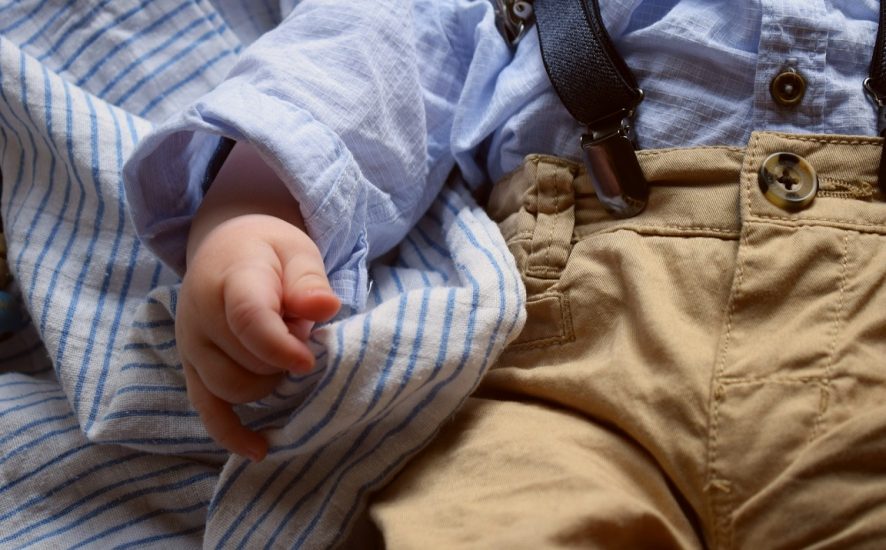Often, when people start making their own clothes, they’ll start with children’s. There are a number of reasons behind this: they can’t find what they’re looking for in stores, they’re making a gift rather than buying for someone, and sometimes, because they are smaller than adult clothes, they’re a bit easier for a beginner. Whatever your motivation, one of the first big hurdles is picking out the fabric for your baby clothes.
With so many different types to choose from, where do you start? Well, we’ve put together a handy list of fabrics that are great for making clothes for kids. But only providing you with a list of child-friendly fabrics isn’t the most useful way to go about it. So, to introduce the topic, we’ll cover the requirements that baby clothes should meet before expanding to different options and why they work.
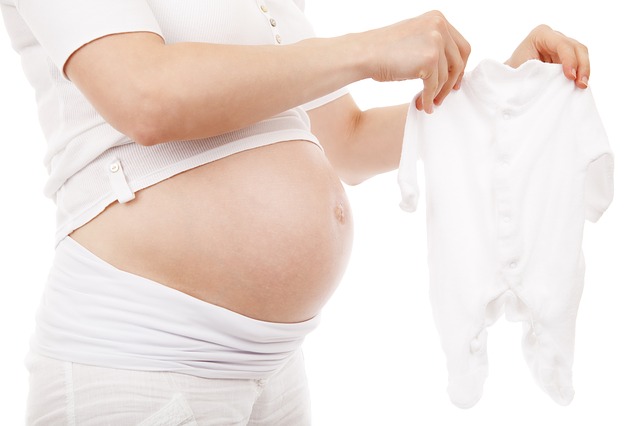
The Primary Consideration
Sensitivity
Most of the time, younger skin is more sensitive. So the first thing you should take into consideration is softness and comfort. Very young newborns will likely still have their umbilical cord clamp, so you need to choose a material that will be comfortable against that. The last thing you want is baby clothes that rub or irritate it.
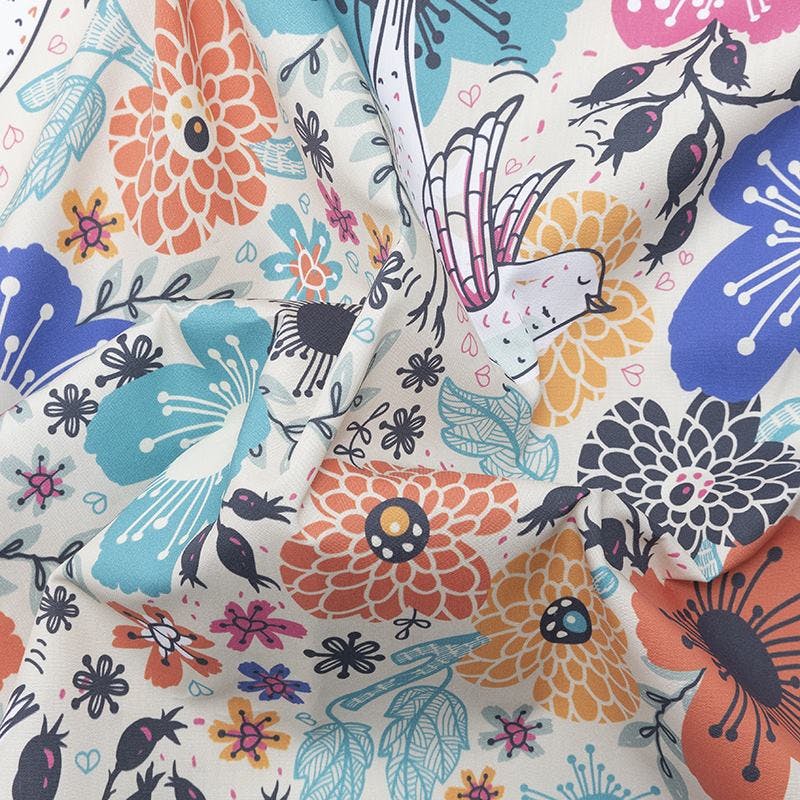
For this, we would recommend: Natural Fabrics and Organic Fabrics. Although not all scenarios call for natural fabric, this is a good starting point. Our organic fabrics, however, are 100% natural and 100% organic.
Our Choices:
Bounce Cotton Jersey: A natural material with amazing stretch qualities. It is super-soft, breathable and has moisture-wicking qualities.
Organic Cotton Drill: It’s a natural fabric that can still be washed on a standard 90°F wash. It is 100% organic, unbleached and even features cotton seed husks, giving it a warm, rustic sandstone color and a wonderfully unique character.
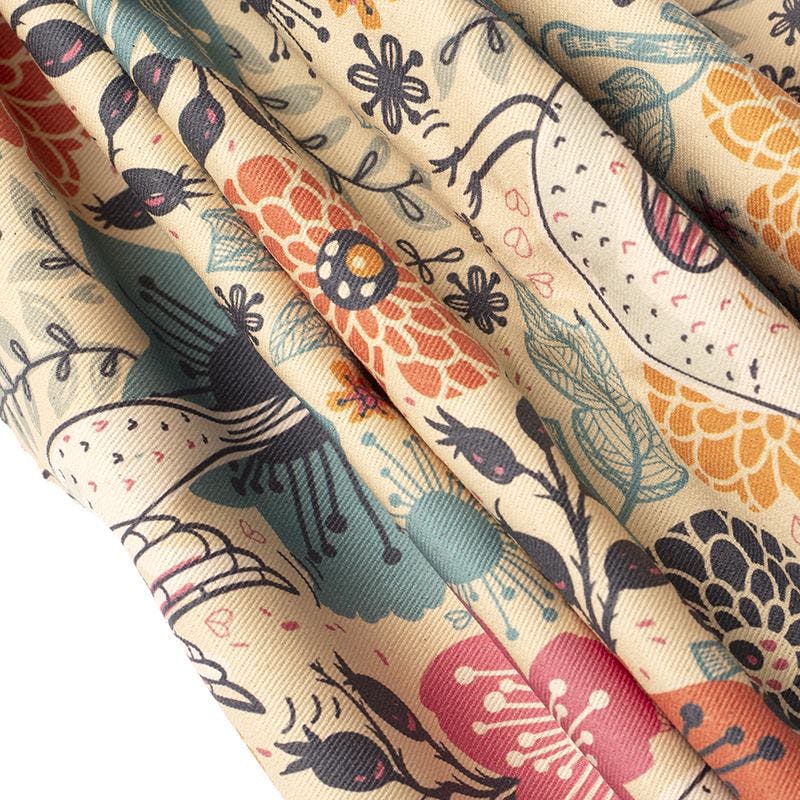
You don’t need to use 100% organic fabric as the only baby fabric option. In fact, many poly-blend fabrics offer great properties for baby fabrics as well. But especially if your little cherub has sensitive skin, natural fabrics are a sure-fire way to provide ideal comfort during those very early, immobile days.
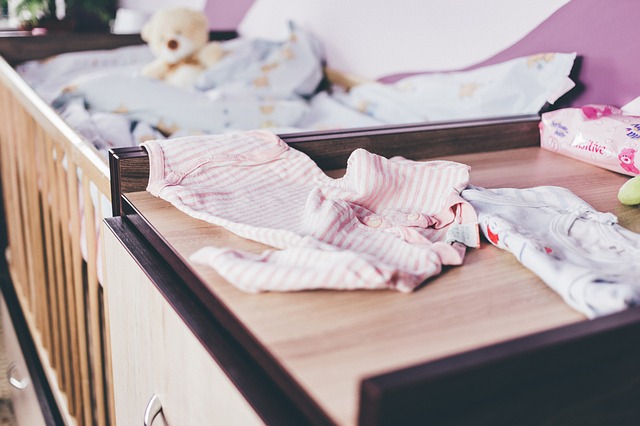
More Things to Think About
Comfort
Comfort is also a major factor when looking for the best baby fabric. But how does comfort differ from sensitivity? This is more about the physical properties of the material, rather than the fibers it’s made from. Ideally, you’ll be looking for a soft material, probably smooth, that will not get rough over time and irritate the child’s skin.
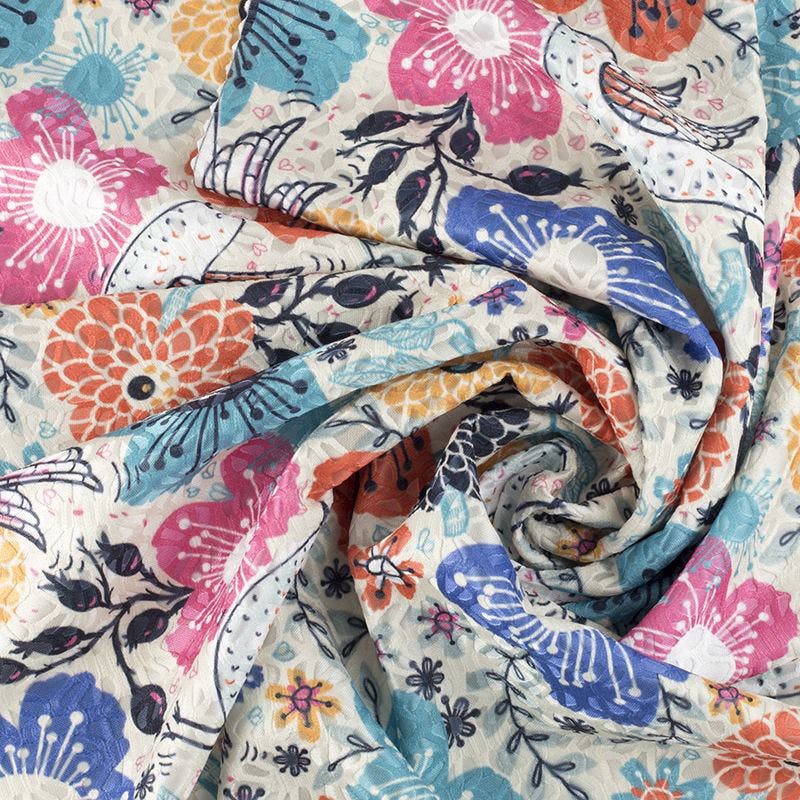
For this, we would recommend: Soft Fabrics. This selection of soft fabric offers a variety of textures that you may not find in the naturals or organics. Our Princess Lace Satin has a beautiful, soft weave that’s perfect for your little princess. The Lima Cotton Twill has great heat-retaining properties, perfect for wintertime.
Our Choice:
Lima Cotton Lawn: A cotton fabric with a great handle. It has a tight weave which keeps heat in well, but is very lightweight and breathable, making it great for all-season baby clothes. It has a 100% natural cotton base, with a poly blend face giving you the sensitivity of natural fabric, with the easy-care of a poly one. This can be washed on a standard 90° cycle and tumble dried on low heat.
Movement
Freedom of movement is a necessity for kids of all ages. The early stages of life are especially so important – learning to roll over, lift your head, crawl, walk and so much more. Baby clothes need to allow this movement and not be restrictive. Otherwise, it could impact their development.

For this, we would recommend: Stretch Fabrics. These are often knitted and will allow stretch when the baby moves, and then bounce back to its original form when relaxed.
Our Choice:
Soft Fashion Jersey: Although this is a man-made fabric, it has amazing qualities that meet all baby fabric requirements. Super-soft (so much that it’s in the name) and amazingly stretchy, this textile acts as a second skin – perfect for making sure that free movement is granted in all directions. Offering ultimate comfort, this is a breathable, durable, easy-care fabric.
Breathability
This one is a little complicated. You’ll want your baby clothes to be breathable, but that doesn’t necessarily mean a thin or lightweight fabric. We have a range of breathable fabrics from as light as 0.44 oz/yd², right up to a heavyweight 10.32 oz/yd². Breathable fabric needs to allow moisture vapor to pass through it.
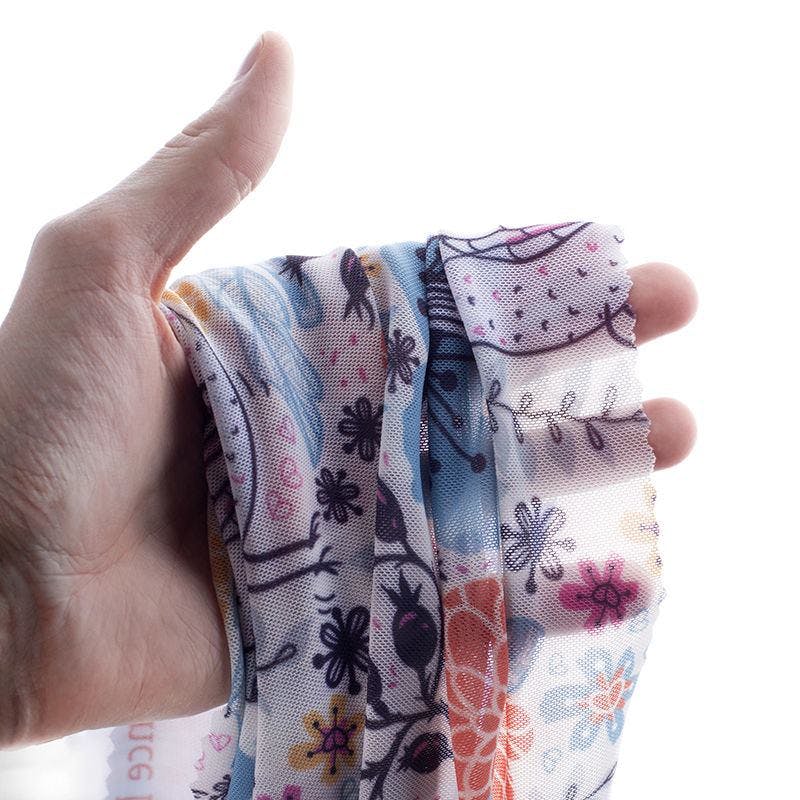
For this we would recommend: Wicking Fabrics. These fabrics draw moisture away from the skin. Wicking fabrics are sometimes also referred to as breathable fabrics.
Our Choice:
Loose Knit Jersey: This has amazing moisture-wicking qualities as well as an amazing four-way stretch and superb recovery. A mid-weight fabric, this loose-knit jersey is perfect for all-weather wear, very soft and extremely breathable. Another fantastic characteristic of this fabric is that the interesting construction of this material creates a random pattern where the yarns are denser in some areas and more sparse in others. This gives a real homespun look to your baby clothes.
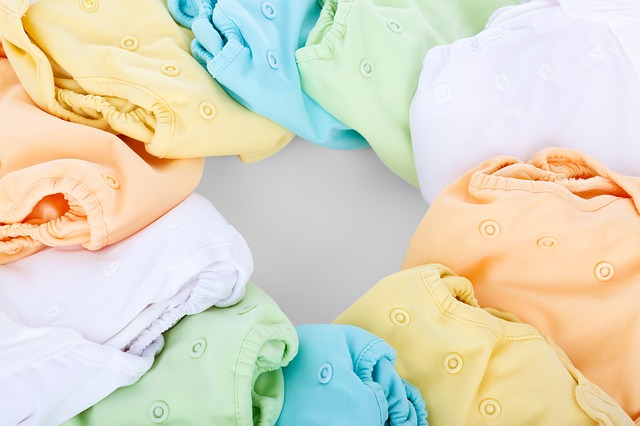
Other Considerations
Baby fabrics need to be hard-wearing, there are no two ways about that. Infants can go through two, three, sometimes four outfits a day, and each of them will need washing – frequently. Either that or your little one will need a walk-in closet bigger than the nursery. Also, the fabric you choose has a lot to withstand: wear and tear from playtime, rubbed knees from crawling, a worn-out behind from all the sitting down abruptly (as well as the inevitable booty-scoot that comes before the crawl) and so much more.
You’ll want baby clothes that are easy to care for. With so many trips through the washing machine (and potentially the dryer too), you don’t want to worry about things like a delicate wash and ironing out wrinkles. Man-made fabrics tend to be easier to care for, but natural ones are much better for delicate skin.
So How Do We Get Around That?
Sometimes it’s a case of considering the most important property for the baby clothes you want to make, and sometimes it’s about finding a compromise. We offer a number of poly-blend materials, which use a combination of both natural and synthetic fibers. These often give you some of the best qualities of each textile and they can be a great middle-ground when it comes to making baby clothes.
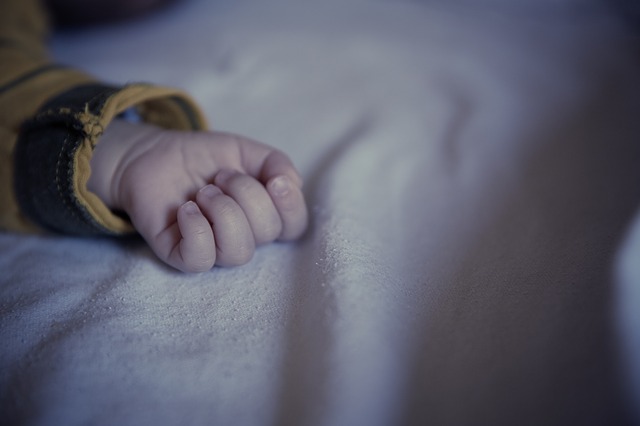
Honorable Mentions
There are some fabrics that don’t necessarily tick many baby fabric boxes but are still incredibly useful – the exceptions to the rules, so to speak. We think it’s always worth considering every option, so check out our honorable mentions.
Terry Towelling
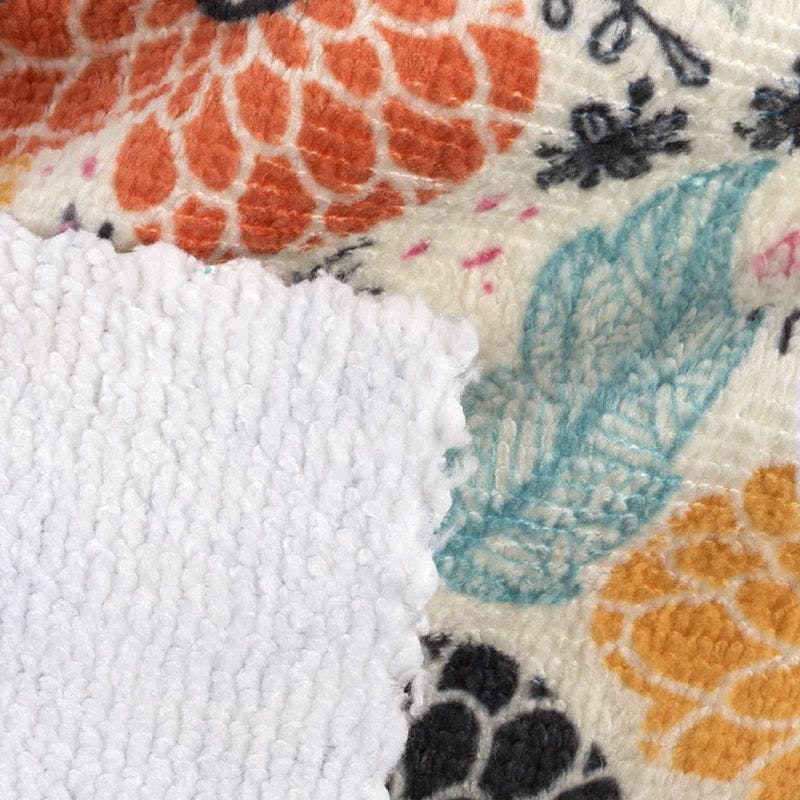
Terry toweling is one of the poly-blend fabrics we just covered. It has a woven pile with microfiber loop technology that is incredibly absorbent. It’s a pretty solid, very thick (9.44 oz/yd²) material, and it has a great fluffy mass. Super-absorbent, very quick-drying and fire-rated, this material is perfect for loose flowing children’s pajamas, towels, and bathrobes.
Polar Fleece
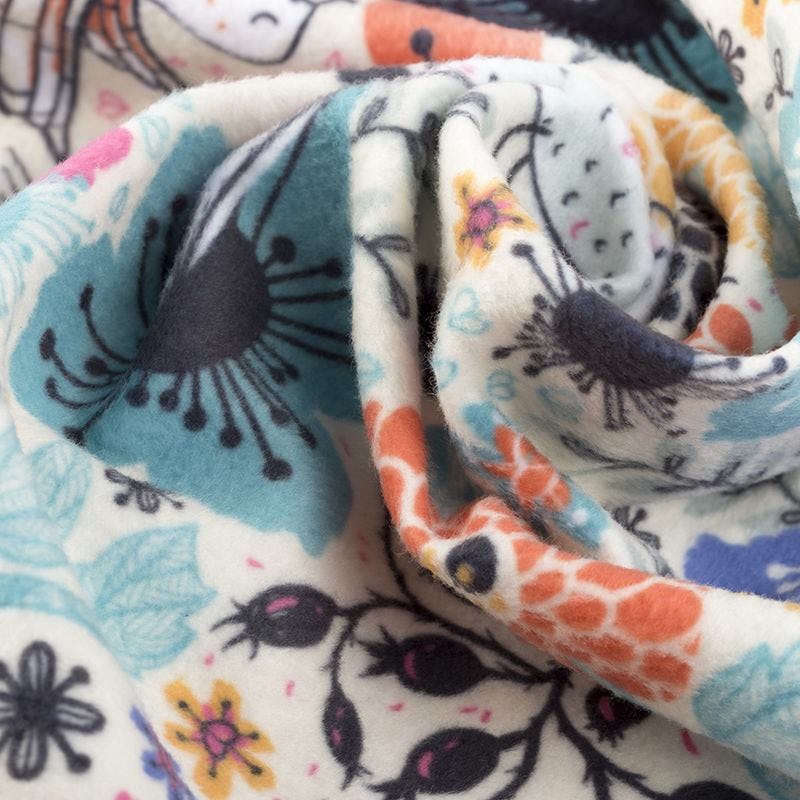
Polar Fleece is an entirely poly fabric. Weighing in at 8.41 oz/yd², it is a plain-woven, thick and warm fabric. It features a four-way stretch, so it’s very malleable, super-durable and hard-wearing. A strong, anti-fray fabric, Polar Fleece has hydrophobic qualities, meaning that it is water repellent. It’s another fabric that is fire-rated, making it perfect for pajamas as well as scarves, sweaters, blankets and a number of other more wintry baby clothes.
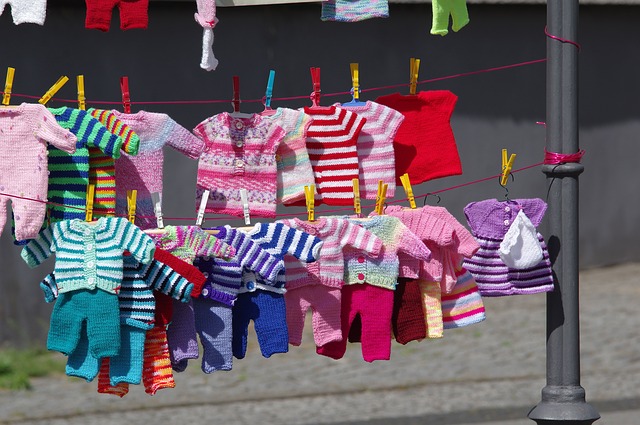
Contrado Baby Fabrics
Here at Contrado, all of our fabrics are completely customizable. You can use your artwork, photos, illustrations, and graphic designs to create your own custom baby fabrics. Everything can be ordered in totally custom sizes and is hand-printed to order here at our facility.
No more do you need to worry about finding the perfect fabric with the perfect print. Simply choose the fabric that meets your needs, and create the perfect print yourself.


